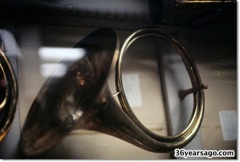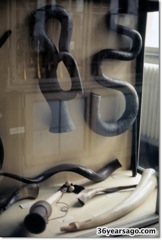Day 075: My trumpet's Baroque
36yearsago.com
Vienna 1971—A Student Journal
A year of music, study, travel, sightseeing &
friends.
Day
75 — My trumpet's Baroque
16-October-1971
(Sat.)
TRANSCRIPT
Spent day practicing and reading. I’ve been reading
more here [in Vienna], than I have in a long time.
Enjoyable.
First chamber music concert. Expensive seat. Small
string ensemble with Ed Tarr, world famous trumpeter
(D-trumpet). Really good. Whole concert was
enjoyable.
REFLECTIONS
Reading.
Reading is
good. Enjoyable. Great way to relax.
Routine.
Nothing
much happening again. My routine appears to be
settling in. I say that I practice, but I remember
saying that the practice rooms were closed on
weekends. Could that have been before school started?
Not certain.
Chamber
concert. I didn’t
know the performer (Edward Tarr) but I enjoyed the
concert. I don’t mention the pieces played but if it
were a D-trumpet (a small, higher-pitched trumpet)
with a string ensemble, my guess is it could be
Baroque. Let’s see.
Survey
says (Wikipedia). A Google
search on
Edward
Tarr (b.
1936) brings me to his Wikipedia article—Tarr is
an American trumpet player and musicologist, and
is known for pioneering the revival of Baroque
trumpet performance practice. He taught Baroque
trumpet in Basel, Switzerland from 1972 to 2001.
So, he was in the Vienna area. Certainly, he was
an excellent player.
Performance practice. Performance
practice is the technique and performance of music of
a specific period (for example, Renaissance or
Baroque) on the instruments of that period in
history—exactly as if the music were being played in
that time period. If you can ever get to see this
type of performance, do so. It will amaze you.


Pictured above right are the ancestors to natural horns—animal tusks and horns into which you blew to make a sound—probably for going into battle, sending a message like "We're coming to kill you! Run away!" You know, a lighthearted musical message.
Very interesting stuff. I used to teach a bit of acoustics and science to Jr. high school band students during my teaching days.
By the way, if the trumpet was Baroque, why didn’t they fix it? (LOL, a little humor goes a long way.)
It’s a fascinating world out there with a lot of history and interesting facts. Enjoy.
John
- - - -